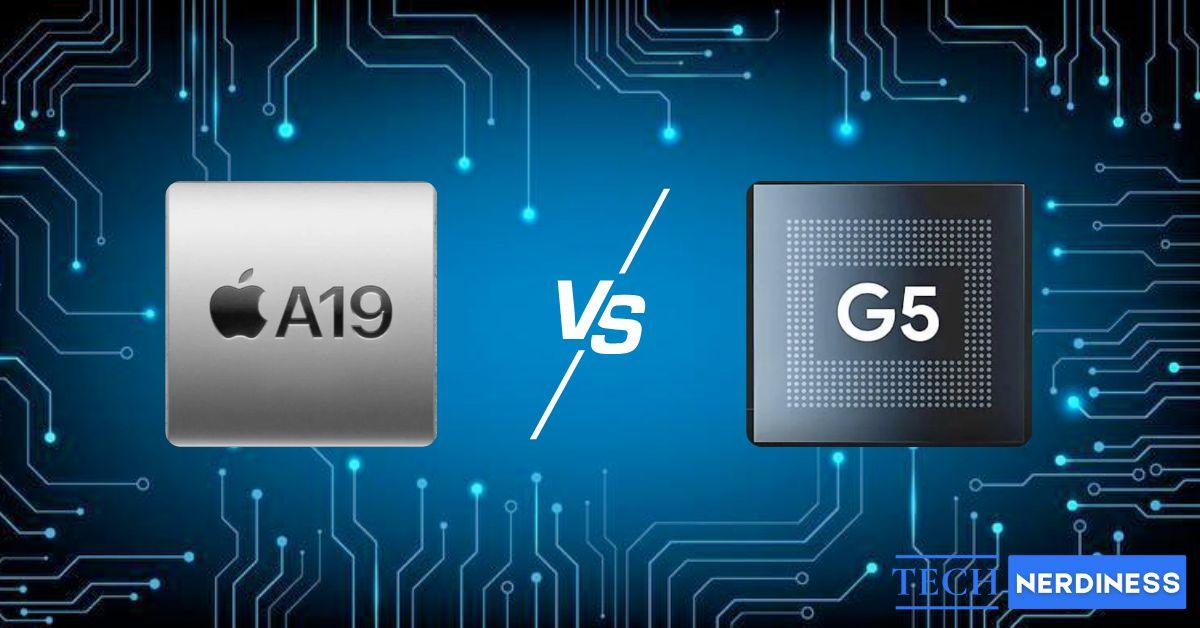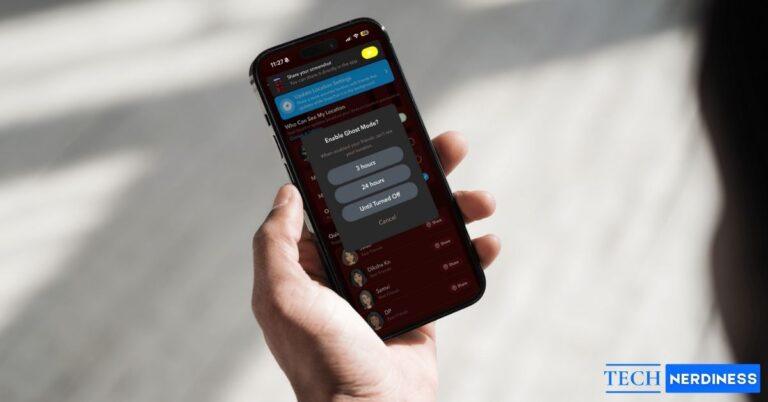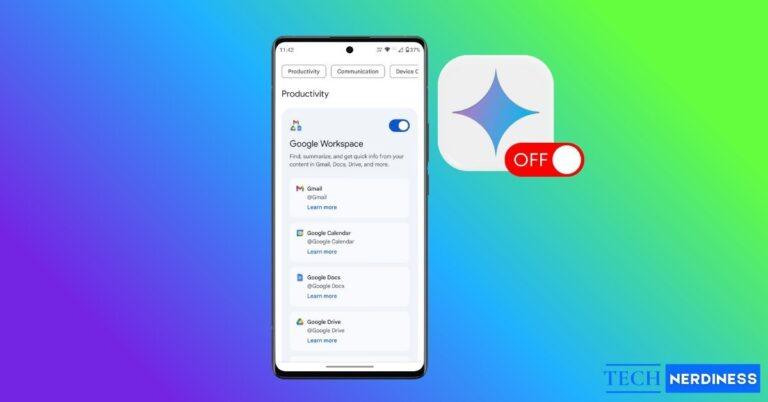- Process and architecture differences: The Apple A19 is built on TSMC’s advanced N3P 3nm node, while Google Tensor G5 relies on the older N3E, limiting efficiency.
- CPU and GPU performance lead: Apple A19 delivers stronger single-core results and advanced GPU features like hardware ray tracing, making it much better for gaming and graphics-heavy tasks.
- AI and machine learning focus: A19’s 16-core Neural Engine boosts AI speed by 4x, while Tensor G5 emphasizes its TPU for generative AI and smart on-device tools.
- System-level benchmark scores: Tests like AnTuTu show Apple A19 consistently ahead across CPU, GPU, memory, and UX, resulting in faster app launches and smoother multitasking.
- Different strengths for different users: Apple A19 dominates in raw performance and efficiency, whereas Tensor G5 is tuned for AI-driven photography and software-based intelligence features.
Apple and Google are once again face-to-face with their latest processors. The iPhone 17 lineup comes with the new Apple A19 chip, while the Pixel 10 series debuts Google’s Tensor G5. For the first time, Google moved away from Samsung and showed major improvement over its predecessors, but the gap with Apple remains large. Here’s how they stack up in specs, benchmarks, and real-world comparison.
Apple A19 vs Google Tensor G5: Specs Side by Side
Apple built the A19 on TSMC’s newer 3nm (N3P) process, while Google used the slightly older N3E node for the Tensor G5.
On the CPU side, Apple goes with six cores (two performance, four efficiency) clocked up to 4.38 GHz. Google packs in eight cores, but the higher count doesn’t translate to higher speed.
For graphics, Apple’s 5‑core GPU supports hardware ray tracing, giving it a big edge in gaming. Google’s Imagination‑based GPU skips ray tracing and lags behind in graphics results.
On AI, Apple continues with its 16‑core Neural Engine, while Google leans on its custom Edge TPU to power Pixel’s AI features.
Apple also uses Qualcomm’s Snapdragon 5G modem, whereas Google relies on Samsung’s Exynos 5400.
Here’s a quick comparison:
| Feature | Apple A19 | Google Tensor G5 |
|---|---|---|
| Process Node | TSMC 3nm (N3P) | TSMC 3nm (N3E) |
| CPU | 6-core (2P + 4E), up to 4.38 GHz | 8-core (1X4 + 5A725 + 2A520), ~3.1 GHz |
| GPU | 5-core Apple GPU with HW ray tracing | Imagination DXT-48-1536 GPU, no ray tracing |
| AI Engine | 16-core Neural Engine | Google Edge TPU |
| Memory | 8GB LPDDR5X | LPDDR5X |
| Storage | Starts at 256GB | Zoned UFS 4.0 (512GB+) |
| Modem | Qualcomm Snapdragon 5G | Samsung Exynos 5400 5G |
| Connectivity | Wi-Fi 7, Bluetooth 6.0, UWB | Wi-Fi 6E/7, Bluetooth 6.0 |
| Benchmarks | 3608 SC / 8810 MC | 2296 SC / 6203 MC |
Benchmarks Tell a Clear Story
Specs don’t tell the whole story. Real-world benchmarks show how these chips actually perform.
CPU Benchmarks
Apple’s A19 dominates in raw CPU power. On Geekbench 6, the A19 scores 3,608 single-core and 8,810 multi-core, while Tensor G5 hits 2,285 and 6,191. That gap is clear in everyday use: apps open faster, photo edits finish quicker, and multitasking feels smoother on the A19.
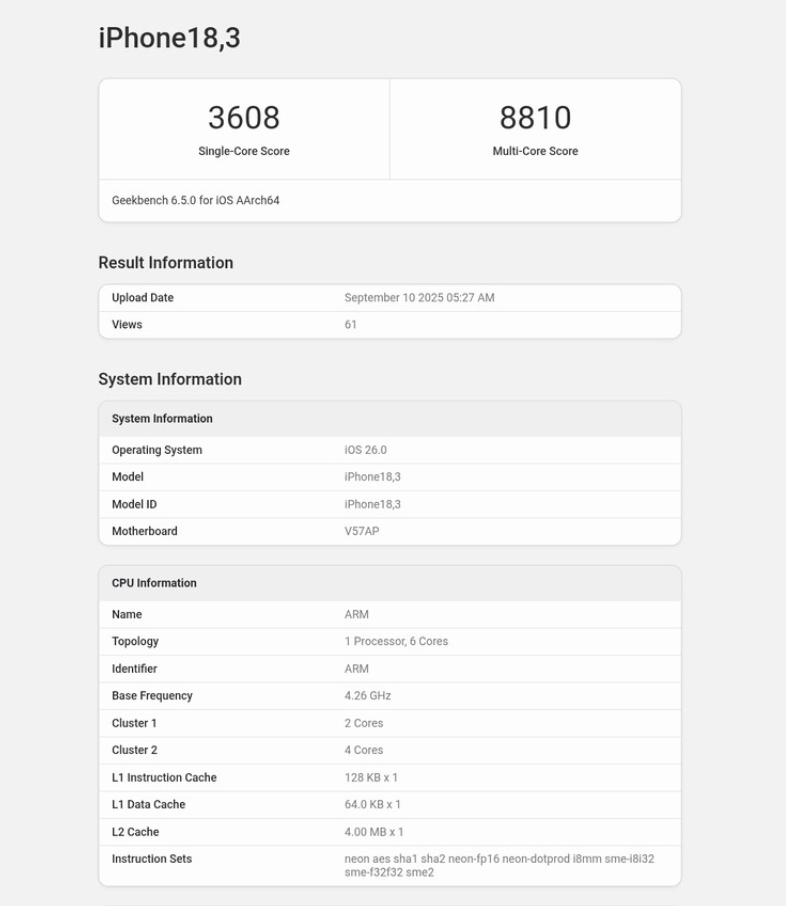
Both chips benefit from TSMC’s 3nm process, but Apple delivers better per-core efficiency and stronger single-thread performance. Tensor G5’s redesigned Cortex-X4 and Cortex-A725 cores mark a big step over G4, yet still trail Apple. SPECint and SPECfp estimates confirm this: A19 improves 10–15% over A18, while Tensor G5 jumps 30–35% over G4 but remains behind Apple in single-thread workloads.
| Metric | Apple A19 | Tensor G5 |
|---|---|---|
| Geekbench 6 (Single) | 3,608 | 2,285 |
| Geekbench 6 (Multi) | 8,810 | 6,191 |
| SPECint (est.) | +10% vs A18 | +30–35% vs G4 |
| SPECfp (est.) | +10% vs A18 | +30–35% vs G4 |
| Notes | Strong single-core, efficient cores | Big gen-to-gen jump, still behind Apple |
Tensor G5 is a big upgrade for Pixel users, but A19 still leads in CPU strength.
GPU Benchmarks
On graphics, Apple’s A19 again comes out ahead. In 3DMark Wild Life Extreme, A19 scores 5,736, while Tensor G5 lands around 3,100–3,250. That translates to smoother gameplay and higher frame rates on iPhone 17 versus Pixel 10.
Apple also shines in Solar Bay Extreme (2,112) and Steel Nomad Light (2,566). These scores show the GPU handles sustained high-end visuals, not just short bursts. Tensor G5 struggles to break 20 FPS in Wild Life Extreme, though it retains about 95% of peak performance under stress, showing solid efficiency.
| Test / Metric | Apple A19 | Google Tensor G5 |
|---|---|---|
| 3DMark Wild Life Extreme | 5,736 | 3,122–3,254 |
| 3DMark Solar Bay Extreme | 2,112 | — |
| 3DMark Steel Nomad Light | 2,566 | — |
| 3DMark Overall Score | — | 8,933 |
| Sustained Performance | Stable, high FPS | 95% of peak, <20 FPS WLE |
Tensor G5 is efficient and a solid step up from its predecessor, but A19 delivers far superior GPU performance.
AI/ML Benchmarks
Apple and Google take different paths with AI. Apple’s A19 integrates CPU, GPU, and its 16-core Neural Engine for up to 4x faster AI versus A18. Tasks like photo editing, speech recognition, and live translation now run instantly on-device, improving speed and privacy.
Google’s Tensor G5 leans on its new 4th-gen TPU. It’s 60% faster than G4 and tuned for generative AI. Gemini Nano runs 2.6x faster and twice as efficiently, powering 20+ AI features on-device. Real-time transcription, Magic Cue, and advanced call assistance all benefit from this TPU.
| Feature / Metric | Apple A19 | Google Tensor G5 |
|---|---|---|
| Neural Engine / TPU | 16-core Neural Engine + GPU accelerators | 4th-gen TPU, +60% faster than G4 |
| Peak AI / ML Performance | Up to 4x vs A18 (est. 40+ TOPS) | 2.6x faster Gemini Nano, 20+ on-device AI tasks |
| Real-World Benefits | Faster photo, voice, and language tasks | Generative AI, transcription, translation, contextual features |
| Privacy / Latency | Strong on-device inference, low latency | Strong focus on on-device models, minimal cloud reliance |
Apple’s A19 excels at broad, low-latency AI tasks, while Tensor G5 pushes generative AI. Both chips make big leaps from last year but reflect two different AI visions.
System Performance
System-level benchmarks widen the gap further. In AnTuTu v10, A19 scores around 1.91 million, well ahead of Tensor G5’s 1.17–1.29 million. That translates into faster app loads, smoother multitasking, and better performance in demanding tasks.
Breaking it down: A19 posts nearly 511,000 in CPU and 662,000 in GPU sub-scores. Tensor G5 sits closer to 416,000 (CPU) and 367,000–382,000 (GPU). The difference is most obvious in games and graphically heavy apps. Memory and UX also lean in Apple’s favor, thanks to faster bandwidth and tighter system integration.
| Metric / Subtest | Apple A19 | Google Tensor G5 |
|---|---|---|
| Total AnTuTu v10 Score | ~1,916,678 | 1,173,221 – 1,291,252 |
| CPU | 510,193 | 415,848 – 457,073 |
| GPU | 662,974 | 367,206 – 382,578 |
| Memory | 327,866 | 242,613 |
| UX | 415,645 | 208,988 |
Tensor G5 is more efficient and stable than older Tensors, but A19 stays well ahead in total performance.
Camera and ISP (Image Signal Processor) Performance
Apple’s A19 ISP builds on larger 48MP sensors and the Photonic Engine to deliver sharper detail, better HDR, and cleaner low-light shots. It supports up to three 48MP cameras, 8x optical zoom, and advanced video modes like 4K HDR, ProRes RAW, and Log 2. For creators, this means pro-level tools are baked into the iPhone 17, while everyday users see smoother skin tones, natural colors, and less noise across photos and videos.
Google’s Tensor G5 ISP takes a more AI-heavy approach. Working with Gemini Nano, it powers instant HDR+, motion deblur for moving subjects, and enhanced Night Sight that handles extreme low light. Unique Pixel features like Auto Best Take, Add Me, and Real Tone all depend on this ISP. It also pushes digital zoom further with up to 100x ProRes Zoom and records 10-bit HDR+ video with advanced stabilization, adding C2PA credentials for content authenticity.
| Feature / Metric | Apple A19 | Google Tensor G5 |
|---|---|---|
| Camera Support | Up to three 48MP sensors | Multi-camera with AI pipeline |
| Zoom | 8x optical, 40x digital | Up to 100x Pro Res Zoom |
| Low-Light / Night Mode | Photonic Engine, noise reduction | Enhanced Night Sight, motion deblur |
| Video Recording | 4K HDR, ProRes RAW, Log 2 | 10-bit HDR+, 4K30 stabilization |
| AI Features | Portrait, Photographic Styles | Real Tone, Auto Best Take, Add Me, C2PA |
Tensor G5 leans into computational tricks and creative AI features, while A19 keeps the focus on pro-grade image quality and video recording. Both are powerful in different ways; the iPhone delivers consistency and control, and the Pixel delivers AI-driven magic.
Where Apple Wins
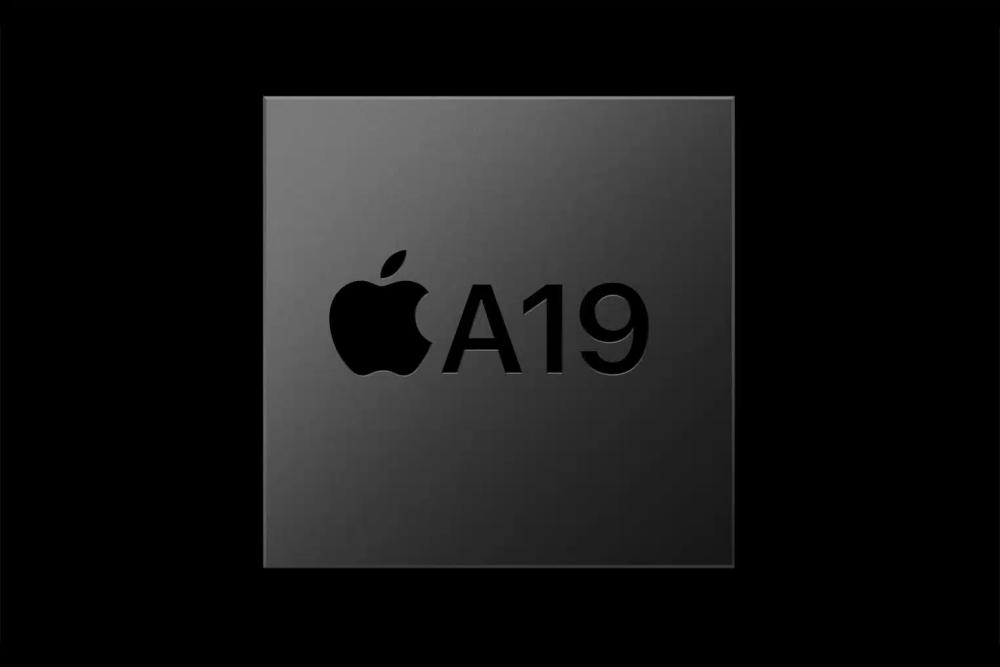
Apple’s A19 dominates in raw performance, gaming, and efficiency. Hardware ray tracing and superior GPU power make iPhones stronger for gaming and creative apps. Add iOS optimization and long-term support, and A19 feels more future-proof.
Where Google Stands Out
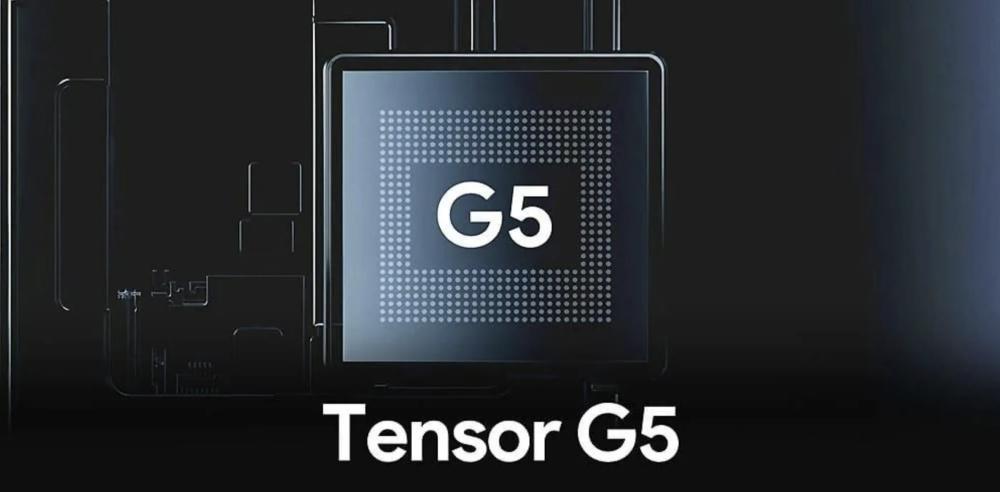
Tensor G5 isn’t about raw power. It’s built for AI-first experiences. Computational photography, live translation, and Pixel-exclusive AI features rely on the TPU. Pixels may not be the fastest, but they deliver AI tricks iPhones can’t match.
Two Different Philosophies in Real-World Use
In everyday browsing and social media, both chips feel smooth. But push graphics-heavy games, video edits, or demanding apps, and A19’s power shows. For photos, translations, or AI-driven tools, Pixel users see Tensor’s strengths.
Apple builds chips for peak performance and efficiency. Google designs processors to power AI-first experiences. If gaming, editing, and raw speed matter, iPhone 17 with A19 is the clear choice. If you want AI features baked into your daily phone use, the Pixel 10 or Pixel 10 Pro with Tensor G5 makes sense.
You might also like:

